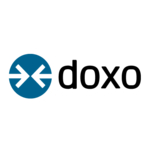Progress made on Sibos 2014 initiatives
A year on from Sibos 2014, several initiatives announced at that conference are making rapid progress, highlighting the increasing drive towards industry collaboration and the shift towards member-owned utilities in some key areas, including collateral management and client onboarding. They also highlight the continued rise of cloud-based connectivity, especially between banks and corporates.
Perhaps the biggest news is the upcoming launch of a global collateral processing utility joint venture between US post-trade utility the Depository Trust and Clearing Corp (DTCC) and Euroclear at the beginning of 2016. A year ago, the project was taking its first steps, having just been announced at Sibos. It is now set to go live “well ahead of” the September 2016 deadline for the Basel Committee on Banking Supervision’s new non-cleared margin requirements, said Ted Leveroni, chief client officer at DTCC.
“We have evolved our thinking on how we present the utility to different kinds of users,” he said. “For example, the buy-side firms have very different needs; some of them have to use initial margin whereas others use variation margin. We made a lot of progress structuring this utility and ensuring it runs well; go live will be early next year.”
Leveroni added that imminent regulatory changes in 2016 will make a drastic difference to capital markets, since so far although there has been much talk of changes to collateral rules, only the US has actually introduced mandatory clearing. But next year, European countries and others will implement mandatory clearing, driving significant changes to demand. At the same time, Basel III capital rules will amplify the effect of global non-cleared margin rules.
“Studies show the rules will increase the number of collateral calls by five times,” said Leveroni. “There will be local shortages and bottlenecks. There’s enough collateral out there in the world but the problem is moving it to where it’s needed. We need to connect those pools together and break down the barriers. That’s why it makes sense to collaborate and that’s why since 2008, we have seen unprecedented collaboration in financial services. It just makes sense to solve a problem like this once, rather than attempt to do so individually, many times over.”
Meanwhile, Swift has been busy with projects of its own. Notably, Swift’s cloud-based corporate connectivity offering, Alliance Lite2, has been growing out its user base and has just reached 1500 customers in the cloud – a number the company says is a milestone. Of these users, 40 per cent are banks.
According to Sebastian Rojas, cloud market manager at Alliance Lite2, some of the larger institutions are using the cloud as a backup. For example, one Japanese bank is using it as an insurance method against disaster risks. At the same time, around 30 per cent of the members are corporates. In total, he estimates the platform is signing up members at a rate of 500 users per year, double its rate a year ago.
“Cloud continues to prove the connectivity of choice for people joining Swift,” he said. “It also has applications in treasury and cash management. This year we announce our first local player in Asia, a Korean firm. We are also partnering with GTC, a Canadian trade finance company. At Sibos, we will be attending a session titled ‘efficiency as a service’, which asks whether the cloud is disruptive. I believe it is changing the concept of an organisation investing in IT that is not core. The cloud makes that faster and cheaper.”
The next stage for Swift’s cloud venture will be to expand its reach to more medium-sized institutions. Alliance Lite2 also plans to increase its focus on integration services and specifically increasing integration with client firms’ existing back offices. Rojas said Swift has a number of packaged integration projects developed specifically to help with that process in areas such as messaging, which aim to reduce the cost of integration between cloud and the back office.
Meanwhile, Swift also has been developing its MyStandards proposition, integrating it into bank systems, with an emphasis on onboarding. At the end of September, the UK’s Barclays Bank adopted the MyStandards Readiness Portal, which focuses on making onboarding easier. The Portal enables users to test their messages against specifications and prove their ability to reach specific quality and straight-through processing rates.
“Through MyStandards, our customers can adopt an automated, self-service approach to test messaging early on in the process, eliminating the need to rely solely on bank resources to complete the testing,” said Nick Morrissey, director of cash management channels at Barclays Corporate. “It removes the bottlenecks and streamlines the on-boarding process to the point where we have enhanced the on-boarding time for new clients from months to weeks.”
Marc Delbaere, head of standards at Swift, said the business recently ran an Asia Pacific user group for the first time and now plans to launch a new version, MyStandards 2.0 at the end of the year. Changes in the new version include double the number of specifications, as well as new management tools to aid navigation. But MyStandards also plans to expand to other parts of on-boarding, such as taking on the standard set of questions that banks ask customers during on-boarding, centralising that and improving the workflow aspect of the service.
“Banks have different messages and standards in different countries,” he said. “With MyStandards, those differences are still there, due to the national rules. But it’s better to have one way of answering the question, rather than working out how to deal with differing message standards and legal requirements in 20 different countries from scratch each time.”
When the bank wants to on-board a new customer, for example a corporate, the corporate needs to go through the legal contract and the paper work etc. But then the IT systems need to talk to each other to make it work. When an organisation wants to do business in 20 different countries, it needs to figure out all the necessary standards.








































